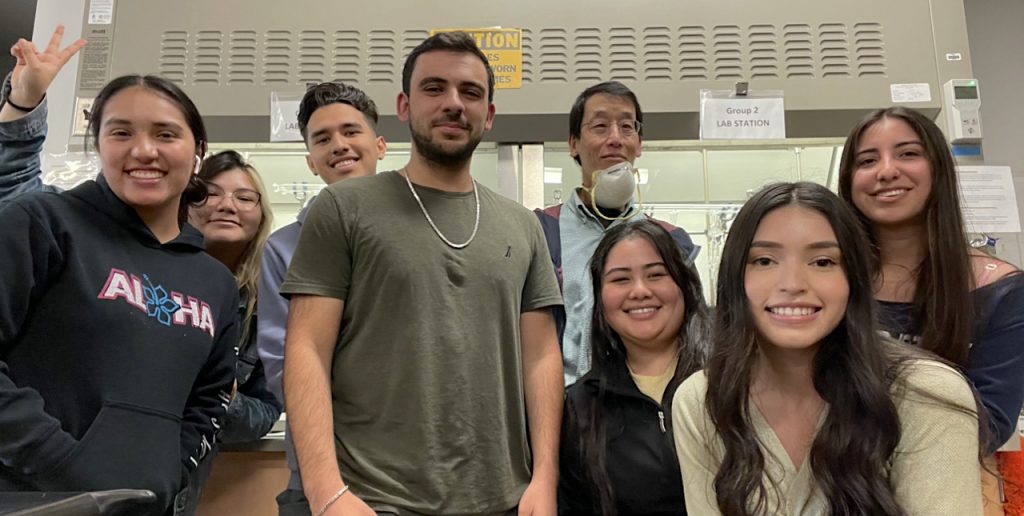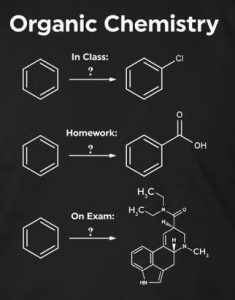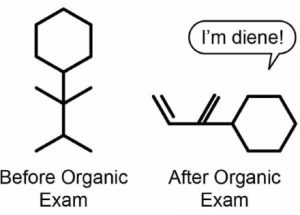There are a lot of organic compounds (16 million and counting). 99% of all living organisms and >99% of all chemical compounds contain carbon, hydrogen, oxygen, nitrogen, phosphorus, and sulfur. Organic Chemistry is the biggest, most studied field of chemistry. In this course, we will discuss organic reactivity concepts and develop skills in predicting products of reactions, explaining product formation with a reaction mechanism, and designing syntheses of organic compounds.
Organic Chemistry II covers the structure and reactions of alcohols and ethers, dienes and aromatics, aldehydes and ketones, acids and derivatives, and amines. Nomenclature of organic compounds, stereochemistry, and reaction mechanisms will be discussed.
(Photo courtesy of Sergio M.)
(from Crystal A.)
Announcements: Spring 2023

Week 16: Bio/Ind Reactions project, presentation, and evaluation.
Assignments:
- CHM 12B Lab locker check in on Monday, 5/15/23 at 2:40 pm and lab safety factor.
- Biology or Industrial Reactions Application project and presentation due Wednesday, 5/17/23 at noon
- Evaluation of two Biology or Industrial Reactions Application presentations due Friday, 5/19/23 at noon
- See the Objective Lecture Slides and video and try the Objective Lecture Quiz Practice Problems (with solutions) on the Chem 12B Lecture Slides, Videos, Practice Problems to help you practice retrieving information to enhance your long term retention.
- Textbook reading Klein “Organic Chemistry”.
Some possible Biology or Industrial Reactions for your Bio/Industrial Reaction application project. Submit your Biology or Industrial Reactions application (Google form) for instructor review due 5/1/23.
Course Links
Course Information – Materials, Course Description, Objectives
Lecture Slides, Videos, Practice Problems
Reactivity Principles and Trends
12B Homework, Exams, Old Exams
Chem 12B Lab Equipment Check Sheet
Click here for the Course Syllabus (9 page pdf)

